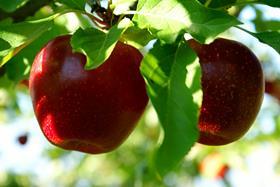
So-called ‘sustainable intensification’ could be the answer to feeding a rising global population without destroying the environment, a leading fruit researcher has claimed.
Joan Bonany, from the Institute of Agrifood Research and Technology (IRTA) in Barcelona, told a conference at Interpoma that the horticulture industry needs to find solutions to producing sustainably and in partnership with biodiversity.
Bonany cited figures showing that 90 per cent of the ammonia impacting on air quality in Europe comes from agriculture, along with 50-80 per cent of the nitrogen in freshwater and 10 per cent of greenhouse gases. With the global population set to hit 9.5 billion by 2050, the environment faces a significant threat from the food production industry.
Moves to reduce meat consumption and eat more fresh produce is putting the industry under further pressure to find new ways of growing more fruit and vegetables using fewer land and resources.
“It matters to all of us,” Bonany said. “If we want to be proud of being part of the apple industry – which I am – we have this ethical commitment [to sustainable production].” One option, he continued, is sustainable intensification – or more intensive, ecological farming, which requires a holistic approach.
Using the example of light, he said light interception levels on any current apple orchard is 60 per cent, but trials are under way using new orchard systems to achieve 85 per cent light interception, allowing production of up to 169t/ha. The new system would use a combination of simpler canopies and no secondary structures, producing more crop of the same quality on the same amount of land.
Genetic diversity
In apples, Bonany said the industry needs to make use of more genetic diversity rather than the reliance upon Golden, Red Delicious and Jonathan descendants. “We are using a very small amount of genetic variety,” he maintained. “We are in a vulnerable situation. Modern apple cultivars retain 98 per cent of genetic diversity compared to older varieties. We need to maximise the use of genetic resources if we are to be successful.”
He also called for greater use of modern techniques such as marker-assisted breeding, whole genome sequencing, fast breeding, cisgenesis and genetic modification.
A greater focus on soil management and nutrition, better water use and the adoption of robotics and Internet of Things technology in the field are all part of the picture, he added.
“To conclude, there will be less land, water, pesticides and plant protection products,” Bonany said. “We need more science, technology and knowledge. It’s all about sustainable intensification. The apple sector is well prepared to take on this challenge.”



